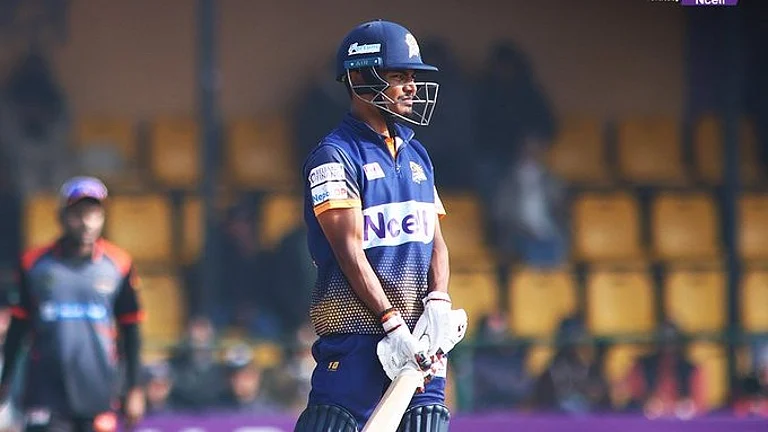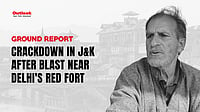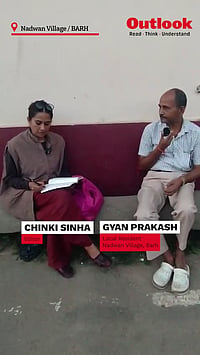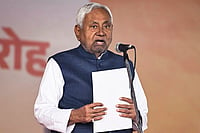Gajesh Kumar, a 32-year-old gem and jewellery trader in Baroda, is a potential customer of India’s first bullet train between Mumbai and Ahmedabad that is slated to start service seven years from now. Kumar travels to Ahmedabad, Surat and Mumbai thrice a week on business, for which he either takes a train or drives down. Much the same as thousands of angadias—Gujarat’s diamond and jewellery couriers—who discreetly and efficiently transport high-value goods and cash, often using India’s railway network. Why, a report in Mint lists the Mumbai-Ahmedabad Gujarat Mail as ‘angadia mail’—most seats between carriages S-4 and S-7 are occupied by these couriers.
The community, which travels the Mumbai-Ahmedabad corridor frequently, is excited about the bullet train. For them, a faster mode of travel could save precious time. But there is a bigger question on their minds. At what cost will this convenience come? Kumar is clear. The bullet train will save him crucial hours. But he has his doubts. “We are unsure at this moment. A bullet train would be useful only if it is affordable. We work on low margins and we travel by train to save costs. If bullet trains are expensive, it will not be an option,” he says matter-of-factly.
That’s a typical response of an Indian consumer—seeking a good deal. Whether the angadias of Gujarat embrace the bullet train or not, the svelte, gleaming mass of steel is already upon us, to be transformed into reality in seven years. The larger question is, as a nation, have we got a good deal? There is a sharp divergence of views.
To be sure, Prime Minister Narendra Modi’s election time promise, the bullet train will catapult India into a select elite club of countries. It will be an obvious sign of India’s economic muscle, a sign of its progress. There is hope that the bullet train will have a ripple effect on the economy and transform it—much like India’s famed Golden Quadrilateral project fuelled a booming economy.
Says Vinayak Chatterjee, chairman, of infrastructure consultancy Feedback Infra: “Projects like the bullet train serve like a beacon of progress for others to emulate. The project will require sophisticated track and a large part would use Indian cement and steel. A demand for Rs 66-70,000 crore would be created and that kind of cost of production has an economic multiplier effect of 5.5 times. India works on a demonstration effect. The Delhi Metro led to many cities having metros. The bullet train could lead to more.” This is a view echoed by many in industry.
Yet no one denies that the cost is prohibitive. Although the Japanese government will provide Rs 79,000 crore for the Rs 98,000 crore project at a lenient loan with an interest rate of just 0.1 per cent and a repayment period of 50 years with a moratorium of 15 years, the Indian government (that is taxpayers) will have to eventually pay back the money, putting considerable burden on the economy.

Indian Journey Passengers atop a train in Chandausi, Uttar Pradesh
Moreover, the Indian Railways network itself is low on funds for crucial development and improvement. It faces a plethora of problems, from dirty coaches to lack of maintenance. Also, a large part of railways expansion has been held back due to lack of funds. The trains that move India’s poor and middle-classes need upgradation of coaches and maintenance of systems. Is one bullet train then a luxury?
For some who have seen the Gujarat model first hand, this is familiar territory. Indira Hirway, director, Centre for Development Alternatives, Ahmedabad, says, “Why do we need glamourised infrastructure? Bullet trains at best are glamour infrastructure and elitist. It is just being brought in because Modi loves glamour. It will have no big impact.” It is clear that bullet trains will not make money. It has not in most parts of the world. China is struggling with a debt problem as well as losses on account of its high-speed trains, while elsewhere too high-speed and bullet trains are yet to be profitable. Worse, even those who approve of them are dismayed at the choice of the first sector (see interview with E. Sreedharan).
Former railway minister Dinesh Trivedi feels that bullet trains were relevant when budget airlines were not there. But now airlines offer a much better price proposition. Indeed, it is questionable if bullet trains will make a difference to travel between the two cities at all. Currently, over 70 trains connect Ahmedabad and Mumbai; they are well-connected by air and a road highway too. A little over two hours would be saved by a bullet train, while it will probably take the same time by air. The tariff for a Mumbai-Ahmedabad bullet train ride is likely to be of a minimum of Rs 2,500-3,000 which is close to the airfare and significantly higher than the highest train fare.
Trivedi was part of the UPA government, under which the first discussions of bullet trains started. “The Railways do not have the money to replace old assets and feed depreciation. Given this situation, attention to bullet trains instead of the basic health of the railways, which is in the pits, is not the priority the country needs now,” he says. Trivedi adds that during his term as railway minister, he had proposed to the Japanese that India will not put in money or take a loan but will work on a profit-sharing system where India provides the land, the Japanese build the bullet train and run it and both share profits.
The cost of bringing in the bullet train has been severely criticised. Dinesh Mohan, of the Transportation Research & Injury Prevention Programme (TRIPP) at IIT Delhi, says, “There is no real need to spend so much on this project so that a few well off Indians save a couple of hours. There are many more pressing problems.... High-value small projects tend to divert attention from the immediate, less sexy issues like increase in capacity for those jam-packed in second-class compartments and focus on safety.”
Though the financial part is sugar coated, the deal with Japan has not clearly stated terms for transfer of technology (though it figures in the initial document to bring in a Make in India element). This means, at some point in time and in a phased manner, there will be local manufacture. But that has to be finalised. The Japanese government has indicated that Indian companies can get involved in the civil construction—different from other projects where Japanese companies are preferred. At the moment, Japan will provide the Shinkansen technology and the rolling stock—trains, the crucial signalling and telecommunications systems. Japan will also be involved in training of Indian personnel and sharing of technical knowhow and information and best practices.
Exchange of technical personnel is also part of the deal. The per km cost of construction of the bullet train has been put at Rs 180 crore, which is much less than some of the Metro lines in India, which are well above Rs 200 crore.
That said, keeping in view the experience in Taiwan, which also started them based on the same Shinkansen technology, there is a question over the feasibility of bullet trains here. Taiwanese bullet trains have been struggling with huge losses because of high depreciation, low ridership and interest payments. India may also face low ridership so long as tariffs are kept high—essential to cover repayments even at low interest rates. It means India will have to strike a balance between cost and repayment to maintain a ridership that will justify the costs. It’s a difficult task.

Times To Come An enthusiast examines a model of a bullet train
Economist Narender Pani warns, “A bullet train is symbolic of development but not practical. When development becomes symbolic rather than need-based, it becomes a show. All transportation...should be in an area that lacks connectivity. Is this the most cost-effective mode of transportation? With that kind of money how many trains could have run between Ahmedabad and Mumbai?”
Given that there will be no synergies with the Indian Railways, as the bullet trains will require totally different technology, infrastructure and tracks, development economists like Jayati Ghosh are appalled. “Bullet trains should be low down on the priorities list. Preference should be to modernise our rail network and renovate coaches which are in a bad condition. Countries like Japan and China improved their existing railway infrastructure before bringing in bullet trains.”
Most agree that apart from India’s view to be seen as an emerging power, the bullet train plan also stems from the Modi government’s disdain for social development priorities (it reduced allocations in education, health and nutrition last year). Social activist Harsh Mander says, “To make this kind of investment when the government is pulling out investment from health and education when millions are undernourished and uneducated is not called for. It is a different matter altogether that bullet trains will serve only the affluent. Given that most travellers between Ahmedabad and Mumbai are rich businessmen or diamond traders, the number of people to be benefited will be limited.”
And jobs? Not many are convinced and feel that jobs generated would be short-term and temporary. While railway unions are cautious and talk of the Railways’ current priorities, experts are hopeful and feel that bullet trains should not be seen in economic terms alone. It should, they feel, be viewed for the technology spin-off benefits to railways in general, as India still has antiquated systems for signalling and a bad system of maintenance, all of which will get a lift. Former Railway Board chairman V.K. Agarwal says, “Whenever you bring in higher technology, it brings offshoots and lots of inputs for existing technologies. India will gain from this as technology spin-offs will help in non high-speed sections.”
As Sreedharan says, the metro was similarly criticised when it was first mooted three decades ago. Whether the bullet train will be a success or useful in Indian conditions is still unknown. But one thing is clear: most bullet train systems globally have become white elephants. The government has now said that it will run it for five years, after which it will be given to the private sector. That might make little difference to the economics. For now one can see two Indias—one superfast, exclusive and gleaming. And the other crowded, dirty and unsafe. Doesn’t that look familiar?
***
The Nuts & Bolts
What’s the good news?
The bullet train will reduce Ahmedabad-Mumbai travel time from 6 hours to 3 hours, giving a strong challenge to airlines. Passengers will start and reach from the city centre—unlike air travel.
Who will it benefit?
Fares will be considerably high and appeal only to well-heeled travellers. With Baroda and Surat as likely stations, it will help diamond merchants and businessmen.
Is AHD-MUM the best choice?
No, there are already about 70 trains connecting the two cities. There’s great connectivity by road and air. Normal train fares are much cheaper, while airfares may end up being at par with bullet train fares.
Is the project expensive?
Of course. At Rs 98,000 crore, it is the most expensive project undertaken by the railways so far. It is being funded by a loan, but despite a 50-year payback period and just 0.1% interest, the loan has to be paid back by the citizens and taxpayers of the country.
Is it required at the moment?
Over 150 new line projects, over 40 gauge conversion and 160-track doubling projects are pending for want of funds. Railways also require funds to upgrade coaches and maintenance of systems.
But won’t it have a positive impact on the economy?
It is likely to have short-term employment and some impact on Indian steel and cement companies. Most technology and material may still come from Japan. No clear indication of
technology transfer at this stage.
***
The Stats
- Cost of the project Rs 98,000 crore
- Loan from the Japanese Govt. Rs 79,000 crore
- Govt/Railways share in the project Rs 19,000 crore
- Time for project completion 7 years
- Interest rate for Japanese loan 0.1%
- Repayment period 50 years*
- Length of the corridor 480 km
- No. of trains on the route 70 daily & weeklys
- Highest first class fare now Rs 1,855
- Likely minimum bullet train fare Rs 2,500-3,000
- Current lowest airfare Rs 2,200
*With a 15 year moratorium
Related Stories Toofan Mail 2020






















